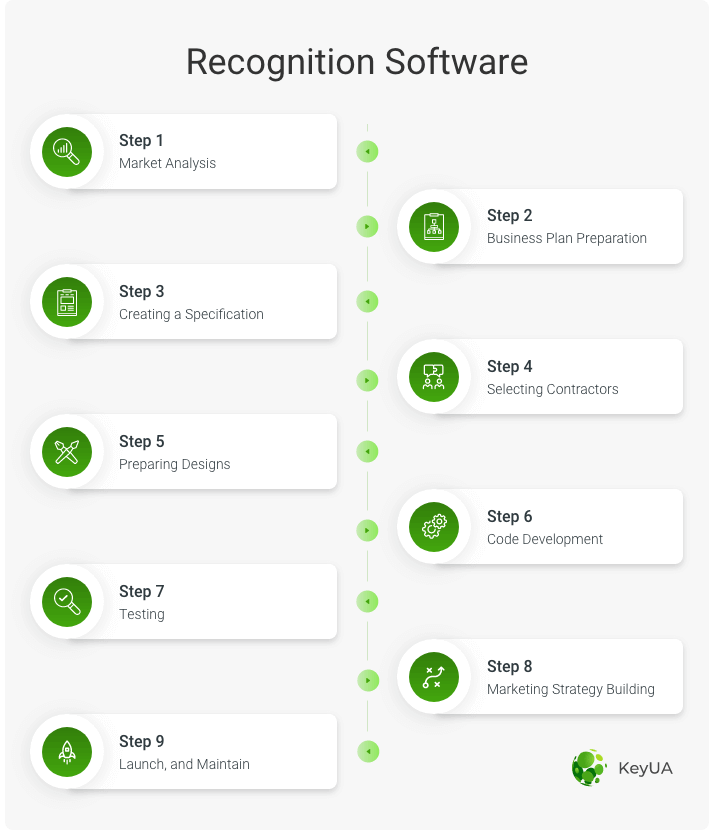Friends, To build image recognition software, start by collecting a diverse dataset and then train a machine learning model. Use frameworks like TensorFlow or PyTorch for implementation.
Image recognition software is revolutionizing various industries by automating tasks that require visual perception. From healthcare to retail, this technology enhances efficiency and accuracy. Building such software involves gathering a large, annotated dataset to train a machine learning model. Frameworks like TensorFlow and PyTorch offer robust tools for developing these models.
These frameworks simplify the process, enabling developers to focus on optimizing performance.
With the right approach, creating effective image recognition software becomes manageable, opening doors to innovative applications.
Complete Guide: How To Build Image Recognition Software
Discover the essentials of building image recognition software with our complete guide.
Learn step-by-step processes, tools, and techniques for creating effective image recognition systems. Understand how to implement machine learning algorithms and optimize performance for accurate results.
Creating image recognition software can be an exhilarating journey. It combines the art of programming with the science of artificial intelligence.
This guide will walk you through the essential steps to build your own image recognition software.
Define Your Project Requirements
Firstly, understand the problem your software will solve. This foundation ensures a clear direction.
-
- Target audience: Define who will use the software.
-
- Specific problem: Identify the problem your software will address.
-
- Expected outcome: Determine what you want the software to achieve.
Choose The Right Tools And Libraries
Selecting the appropriate tools and libraries is crucial. The right choices streamline development and improve efficiency.
-
- TensorFlow: A powerful open-source library for machine learning.
-
- OpenCV: An open-source computer vision library.
-
- Keras: A user-friendly neural networks API.
Data Collection And Preparation
Data is the backbone of any image recognition software. High-quality data ensures better performance.
-
- Collect diverse images: Gather a varied dataset to improve accuracy.
-
- Annotate images: Label images to help the model learn.
-
- Split dataset: Divide into training, validation, and test sets.
Model Selection And Training
Choosing and training the model is a critical step. The model's accuracy depends on the quality of training.
Deep learning models like Convolutional Neural Networks (CNNs) are popular for image recognition.
-
- Select a model: Choose a CNN or pre-trained model.
-
- Train the model: Use your dataset to train the model.
-
- Monitor performance: Track accuracy and loss during training.
Testing And Evaluation
Testing ensures your software performs as expected. Evaluation highlights areas for improvement.
-
- Test with new data: Use unseen data for testing.
-
- Evaluate performance: Check metrics like accuracy and precision.
-
- Fine-tune model: Adjust parameters to improve results.
Deployment And Maintenance
Deploying your software makes it accessible to users. Maintenance ensures it remains effective over time.
-
- Deploy on a server: Host the software on a reliable server.
-
- Monitor performance: Regularly check for issues.
-
- Update as needed: Keep the software updated with the latest improvements.
Building image recognition software is a rewarding process. With clear steps, the journey becomes manageable and exciting. Dive into each phase with confidence, and you’ll create a powerful tool.

Credit: keyua.org
Frequently Asked Questions
What Is Image Recognition Software?
Image recognition software identifies objects, people, places, and actions in images. It uses machine learning and artificial intelligence. This technology is widely used in various industries.
How Does Image Recognition Work?
Image recognition uses algorithms to analyze images. These algorithms identify patterns and features. The software then classifies the image based on this data.
What Are The Benefits Of Image Recognition?
Image recognition automates tasks, improves accuracy, and enhances user experiences. It's crucial for industries like healthcare, retail, and security. It saves time and reduces human error.
Which Programming Languages Are Used?
Python is the most popular language for image recognition. Other languages include Java, C++, and MATLAB. Libraries like TensorFlow and OpenCV are commonly used.
Conclusion
Building image recognition software can be both rewarding and challenging. By following the right steps, you can create effective solutions.
Use powerful tools and keep learning to stay ahead. This journey enhances your skills and opens new opportunities. Dive in and start developing your image recognition software today.

0 Comments